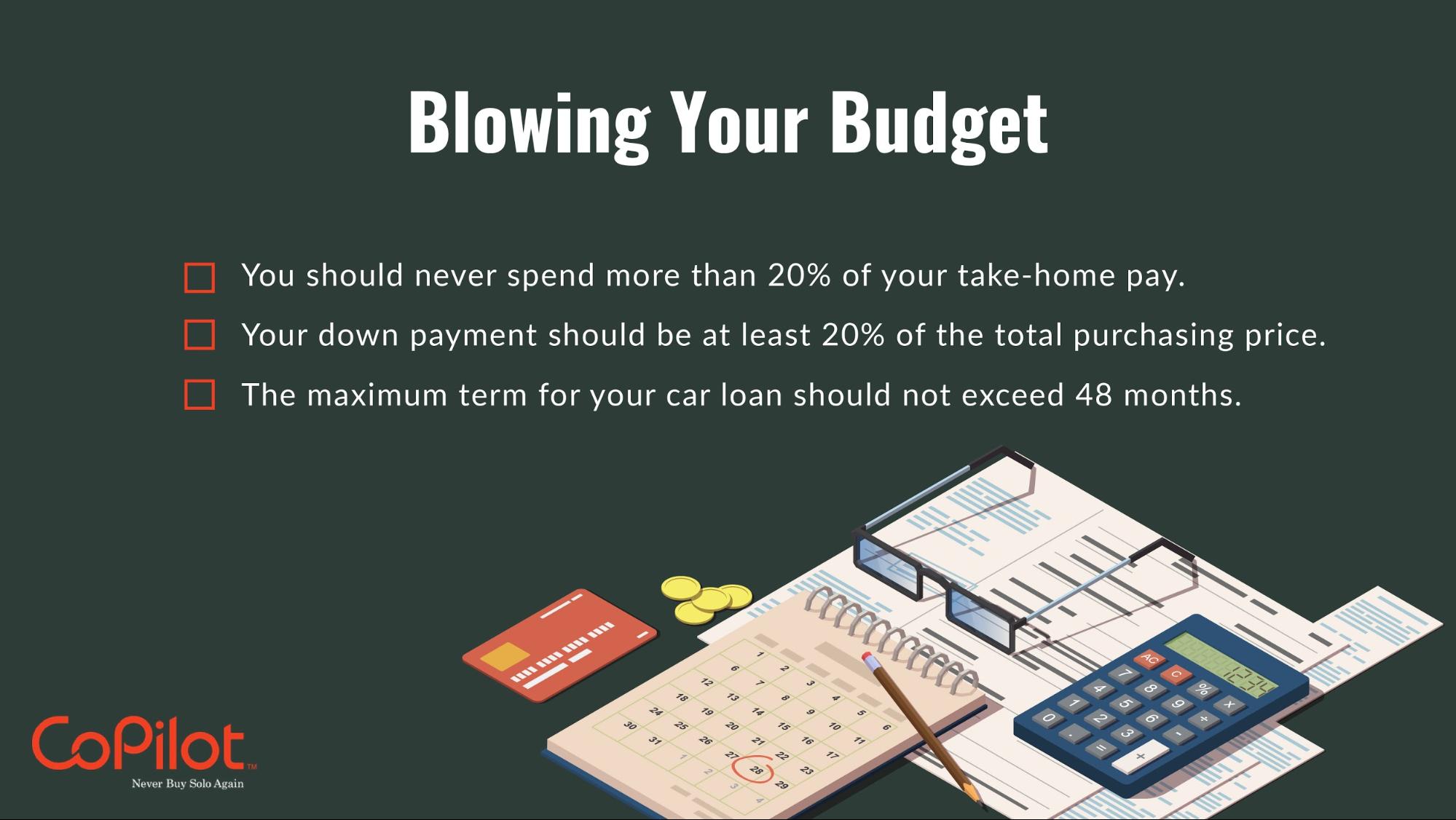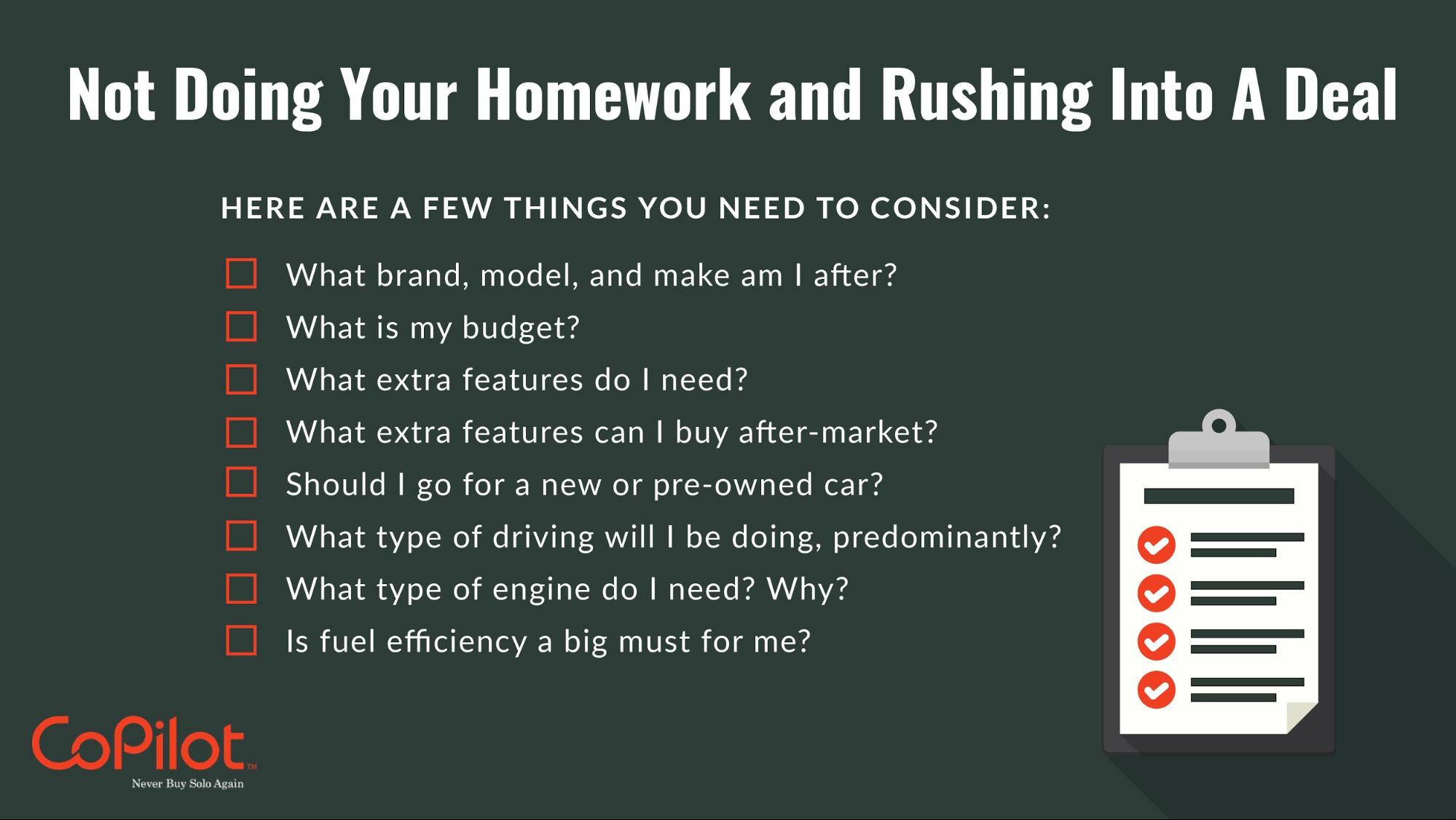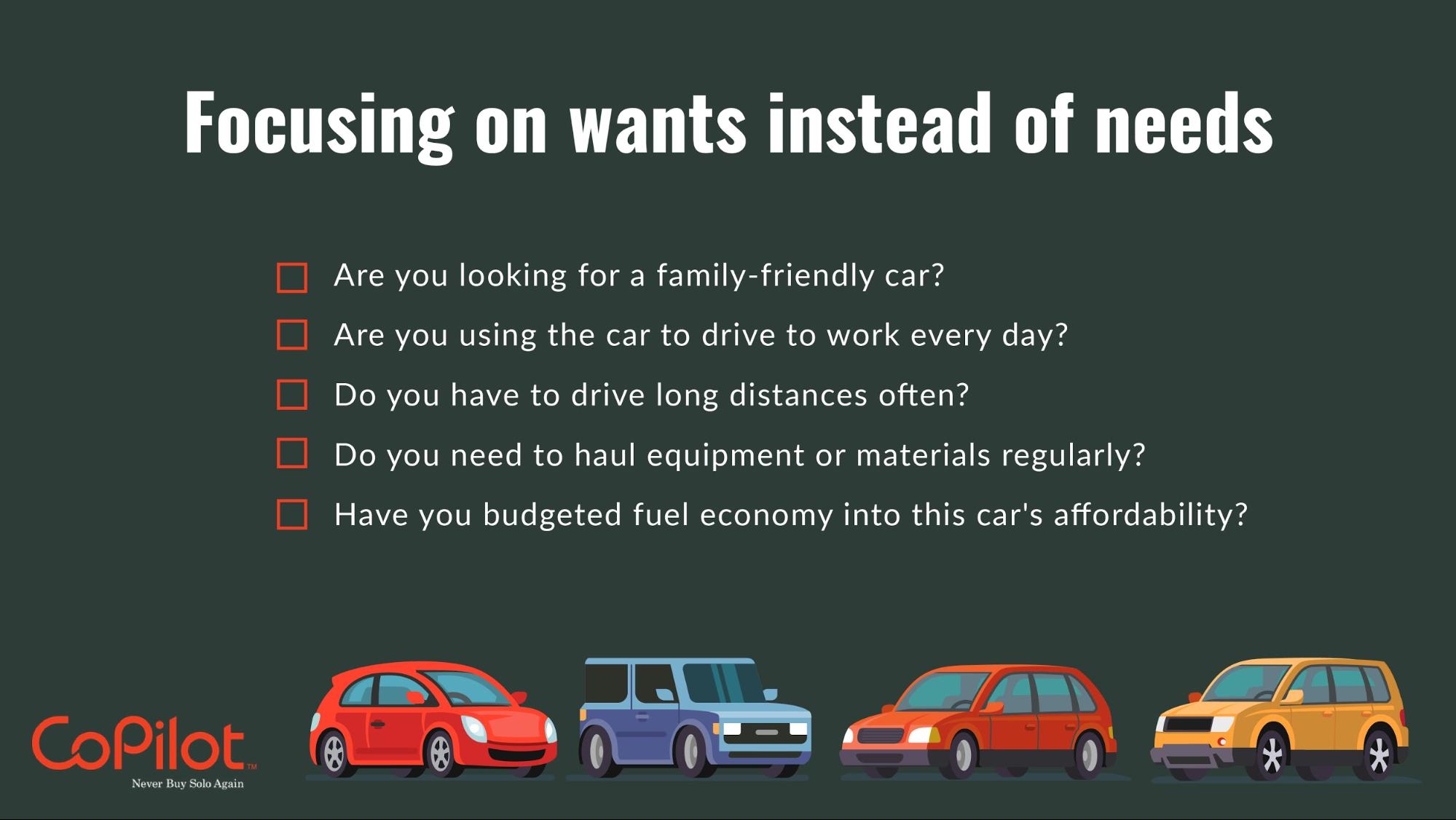5 Car Buying Mistakes and How You Can Avoid Them

The process of buying a car has always been a tedious task.
You need to find a brand, model and make, evaluate the different features available, determine your budget, assess the various cars on the market, perform vehicle history checks, test the car out, and then negotiate a price that works.
And none of it can be rushed, after all this is the vehicle because you’ll be driving around for the next few years. And the average American is in their car for almost 300 hours every year.
Skip any of the steps mentioned, and you could be walking away with some serious buyer’s remorse (let alone less money in your pocket).
To help you out, this article will give you five of the most common mistakes people make while buying cars. Don’t worry, we’ll also show you how you can avoid all these pitfalls and what to look out for when you’re considering making a purchase.
Car Buying Mistake #1: Not Doing Your Homework and Rushing Into A Deal
Let’s focus on the first part: not doing your homework.
We understand that buying a new car can be a fun and exciting process. But cars cost a lot of money. Don’t let the excitement result in a rash “caught-up-in-the-moment” decision you’ll regret.
You need to conduct thorough research before stepping foot in a car dealer’s lot.

Sometimes, even if you’ve conducted research beforehand, you may get too eager and start getting out your checkbook or credit card before you should. Stop. Take a deep breath. Take a step back.
Just like with a big medical decision, it’s important you get a second opinion when buying a car. Shop around for different options, participate in a few test drives, request vehicle history reports, and read many consumer reports before saying yes to any private seller or dealer.
DOWNLOAD THE APP
The CoPilot app is the smartest way to buy a car. Search all listings in your area, get notified about deals, new listings, and price drops, or chat with one of our copilots for some hands-on advice.
Car Buying Mistake #2: Focusing On Wants Instead of Needs
This is a critical tip: you need to make sure you always prioritize your needs over your wants.
Everyone wants a car that looks good on the road. However, not all of these cars fit within your budget range, are fuel-efficient, or have comfortable interiors.
Go for a vehicle that works with your daily needs, not your childhood dreams.
Here are a few questions you should consider:

Also, sometimes you might want to consider not only your budget but what your monthly payment might be, securing financing, and what the long term maintenance costs will be. When it comes to focusing on your wants, make sure you take into account potential passengers, your cargo, location, driving style, and aesthetic preferences.
Car Buying Mistake #3: Buying New When Used Will Do
It’s tempting to opt for a brand new car, but you need to do your research before deciding between a new or used car. They always have the latest features, you can customize the vehicle, and the buying process is significantly easier. But if you’re looking for a better deal, you should always go for pre-owned cars (used) or certified pre-owned cars.
Buying a used car is almost always a better option:
New cars depreciate extremely quickly. New cars lose 30% of their value within the first year
Used cars frequently have the exact same features as new models, but (within three years) can be 54% cheaper.
Maintenance costs (apart, perhaps, from mechanical issues) are more affordable, as insurance and registration will be cheaper.
There’s more variety with used models.
If you’re concerned about reliability, go for certified pre-owned programs (CPO) which will ensure your vehicle is inspected, refurbished, and certified by the manufacturer. If you’re not so sure where to start, use CoPilot to find local used cars in your area.
Car Buying Mistake #4: Succumbing To Feature Creep
Feature creep is an extremely common expense when it comes to buying cars.
From adaptive cruise control, built-in navigation systems, cargo nets, and more, there are endless additional features which can be added to a vehicle.
While most add on features are not essential to a car’s full functionality, you might end up falling victim to high-pressure sales and spend more than your budget.
A simple way to avoid feature creep is to come prepared: make a list of the car parts you absolutely need.
This way, you eliminate the cost of buying additional add-ons. Anything that’s not on the list, you won’t buy at the dealer. Don’t worry if you’re interested in these add-ons. Most auto part stores can sell you these extras, often at half the price the dealer is offering.
SIGNIFICANT SAVINGS WITH NEARLY-NEW AND OFF-LEASE MODELS
Buying nearly-new and off-lease models can save you a ton of money. With low mileage and CPO offers available, reliability isn’t an issue. Learn how much you can save by buying off-lease models with CoPilot Compare.
Car Buying Mistake #5: Blowing Your Budget
When it comes to your budget, the first rule is that you should never buy a car in haste. Take the time to conduct thorough research, think about the different options you have, and carefully assess whether the vehicle is for you.
If you’re having difficulty setting a budget, use these simple rules.

For example, if your take-home pay is $6,000 per month, you should not spend more than $1200 paying off your car every month. If you need to pay more every month, you should consider purchasing a cheaper vehicle.
When it comes to staying within your budget, choose a car that you can afford, negotiate with salespeople, and always do your homework. That way, you’re informed and well-prepared to make a financially sound decision.
Final Thoughts
Buying a car is a long and complicated process. Avoid buyer’s remorse by steering clear from the five common mistakes we’ve given in this guide.
Above all, slow down and make sure you take your time to conduct thorough research, focus on your needs, stick to your budget, and explore used cars in your local area.
If you can stay away from these buying blunders, you’ll soon find yourself on the way to a successful car-purchasing experience.







